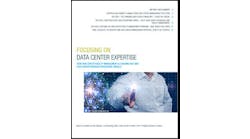JP Laqueur, Senior Vice President of Marketing at DataBank, explores the close ties between cloud strategy and success and data center strategy and approaches.
JP Laqueur, SVP of Marketing, DataBank
Cloud technologies have enabled enterprises to lower operational and capital expenditures, accelerate the development and release of new products and services, and dynamically adjust their IT infrastructure to meet changing market demand. As a result, cloud technologies continue to gain traction and according to IDC, by the end of 2020, 67% of enterprise infrastructure will be based in the cloud.
But not all cloud service providers or platforms are created equally, nor are they always appropriate for certain business sectors or strategic objectives. Some organizations, especially those with strict performance or complex compliance requirements, have re-patriated applications back to premise-based infrastructures after finding cloud platforms were more expensive to operate, or presented additional management and security challenges. In fact, according to IDC in its Q119 CloudPulse report, as many as 85% of customers had initiated some kind of cloud repatriation effort.
And while some clouds have remained “general purpose,” newer “enterprise clouds” have emerged to address the needs of organizations that have greater fault tolerance, security, and compliance requirements.
But the evaluation of which infrastructure is best for an application can no longer simply be a debate about cloud vs. on-premises, or about which type of cloud. It needs to include the consideration of a modern, data center operator. In fact, we believe a third party data center should be at the heart of every cloud or hybrid infrastructure decision and it’s the topic of our latest White Paper: “A Better Way To Cloud.”
Why? The modern data center – with its ability to aggregate colocation, cloud and managed services – is rapidly becoming the core of a hybrid strategy, providing a critical third leg in the infrastructure stool, providing greater security and data privacy than many clouds, and hands on management and compliance expertise beyond the reach of an in-house team.
The data center will help unlock the most effective utilization of the cloud by providing a complete IT infrastructure “ecosystem” that can mix and match each workload with the infrastructure that best supports it.
Here is a closer look at the reasons establishing the right data center foundation can help enable the right cloud strategy:
- Not Every Application is Right for the Hyperscale Cloud – Some applications have been re-written to take advantage of the microservices that hyperscalers provide, but many legacy applications have not. A modern data center with a full complement of infrastructure platforms can enable a migration roadmap over time and provide the flexibility to use the cloud when and where it makes the most sense.
- Flexibility for the Next Technology Cycle – Containerization is getting a lot of attention today, and rightly so. It holds promise of giving users the flexibility of cloud without getting locked into the microservices and pricing of hyperscalers. Containerization may make colocation in a third-party data center a more secure and compliant option – especially when combined with on-ramps to other cloud platforms – providing the best combination of flexibility and security.
- Single Vendor/Multi-Platform Convenience – Modern data centers often provide their own private cloud platforms in addition to colocation, as well as on-ramps to every public cloud platform and hyperscaler, providing the flexibility to mix and match infrastructures as needed. And they can combine it all with centralized account management and single-pane-of-glass visibility.
- On Premises Data Centers Are Not an Attractive DIY Project – Some enterprises may choose to maintain an on-premise facility, but once outgrown or obsolete, the cost and complexity of rebuilding or retrofitting is extremely high. Leasing space in a modern data center with a full complement of cloud and colocation platforms is a far more cost-effective approach that preserves your options for utilizing the cloud and preserves any existing on-premise facility for the applications that truly need it.
- Redundancy & DRaaS Capabilities – Clouds offer an inherent degree of redundancy, but that doesn’t mean they never experience outages – and when they do, the data backup and recovery is often not their responsibility. Having access to a geo-diverse footprint of data centers allows for added resiliency and a modern data center provider can help integrate cloud, data center and on-premise locations for a comprehensive recovery strategy.
- Managed Services & Expertise – Hyperscale cloud platforms excel at offering lots of self-service options, but their technical support can be underwhelming. A forward-thinking data center operator will offer managed services across the lifecycle of your infrastructure from onboarding and migration to ongoing management.
- Security & Compliance – For highly regulated organizations, and those that market their services to the government sector, security and compliance continues to be chief concerns for many businesses migrating to the cloud. According to RightScale’s most recent State of the Cloud report, 81% of enterprises cite security as a top challenge, and 79% are concerned about compliance when asked about their adoption of cloud infrastructure. A modern data center operator can manage a large percentage of the compliance controls needed, and offer turn-key reporting to simplify the compliance auditing and reporting process.
Leveraging these capabilities in today’s data center helps maximize the effectiveness of any cloud strategy.
(Photo: Courtesy of Databank)
In addition, the data center will help unlock the most effective utilization of the cloud by providing a complete IT infrastructure “ecosystem” that can mix and match each workload with the infrastructure that best supports it. And properly constructed, that ecosystem can provide a secure filter through which users access applications whether they are collocated in a data center, on a private cloud platform or in the public cloud.
For instance, a security- and latency-sensitive application can be collocated on company-owned equipment in the data center but protected by the data center’s DDoS, IDS/IPS and web application firewalls. Meanwhile, a different application might be hosted on the data center’s private cloud platform, protected by additional managed security services such as file integrity monitoring and configuration scanning. And if needed, that application could access public cloud platforms via data center-provided on-ramps for additional scaling. In each case, the data center is at the core of the infrastructure protecting data and users as they access applications on any of the infrastructure platforms.
The best data center in 2020 provides the most effective strategy for embracing the cloud while providing the flexibility to adapt as conditions and technology changes. And that’s why the right cloud strategy starts with the right data center strategy.
JP Laqueur is the Senior Vice President of Marketing at DataBank.
For more information on how DataBank’s Data Center Evolved Ecosystem enables this kind of hybrid approach, check out our latest white paper: “A Better Way To Cloud.”





